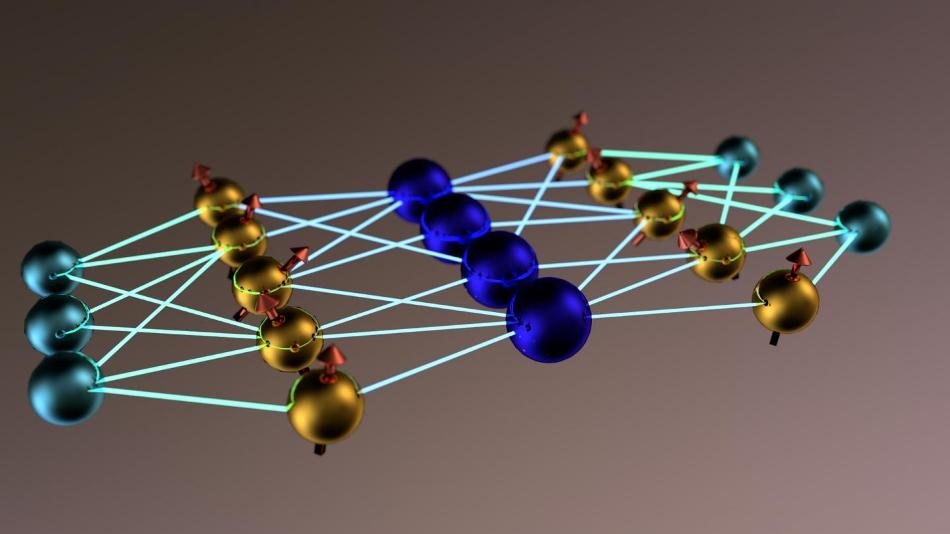Jul 2 2019
Nature is controlled by the laws of quantum physics even on the scale of day-to-day life. These laws describe general phenomena such as sound, light, heat or even the paths of balls on a pool table.
 This is an illustration of the neural network used to predict the state of an open quantum system. (Image credit: A. Nagy and A. Anelli (EPFL))
This is an illustration of the neural network used to predict the state of an open quantum system. (Image credit: A. Nagy and A. Anelli (EPFL))
However, when the laws of quantum physics are applied to a great number of interacting particles, they truly predict a range of phenomena that challenge instinct.
In order to explore quantum systems composed of several particles, physicists should first be able to reproduce them. This can be achieved by solving the equations that define their internal operations on supercomputers. However, while Moore’s Law foretells that the computers’ processing power increases by two times for every couple of years; this is a long way from the power required to overcome the problems of quantum physics.
The reason is that it is extremely difficult to predict the properties of a quantum system, which requires a computational power that increases exponentially with the size of the quantum system—an “intrinsically complex” work, stated Professor Vincenzo Savona, who leads the Laboratory of Theoretical Physics of Nanosystems at EPFL.
Things become even more complicated when the quantum system is open, meaning that it is subject to the disturbances of its surrounding environment.
Professor Vincenzo Savona, Laboratory of Theoretical Physics of Nanosystems, EPFL
Nevertheless, tools to efficiently simulate open quantum systems are increasingly required, since most contemporary experimental platforms for quantum science and technology are open systems, and physicists are continuously seeking new approaches to simulate and benchmark them.
However, considerable advancement has been achieved due to a new computational technique that simulates quantum systems with neural networks. The technique was created by Savona and his PhD student Alexandra Nagy at EPFL—and autonomously by researchers at Université Paris Diderot, the Flatiron Institute in New York, and the Heriot-Watt University in Edinburgh. The whole body of work is being reported across three papers in Physical Review Letters.
“We basically combined advances in neural networks and machine-learning with quantum Monte Carlo tools,” Savona stated, referring to a massive toolkit of computational techniques employed by physicists to investigate complex quantum systems. The researchers taught a neural network to represent several quantum states at the same time in which a quantum system can be cast by the impact of its environment.
Through the neural-network technique, the physicists were able to foretell the properties of quantum systems of significant size and random geometry.
This is a novel computational approach that addresses the problem of open quantum systems with versatility and a lot of potential for scaling up.
Professor Vincenzo Savona, Laboratory of Theoretical Physics of Nanosystems, EPFL
The approach is set to become a preferred tool for studying complex quantum systems, and, looking slightly more into the future, for evaluating the impacts of noise on quantum hardware.